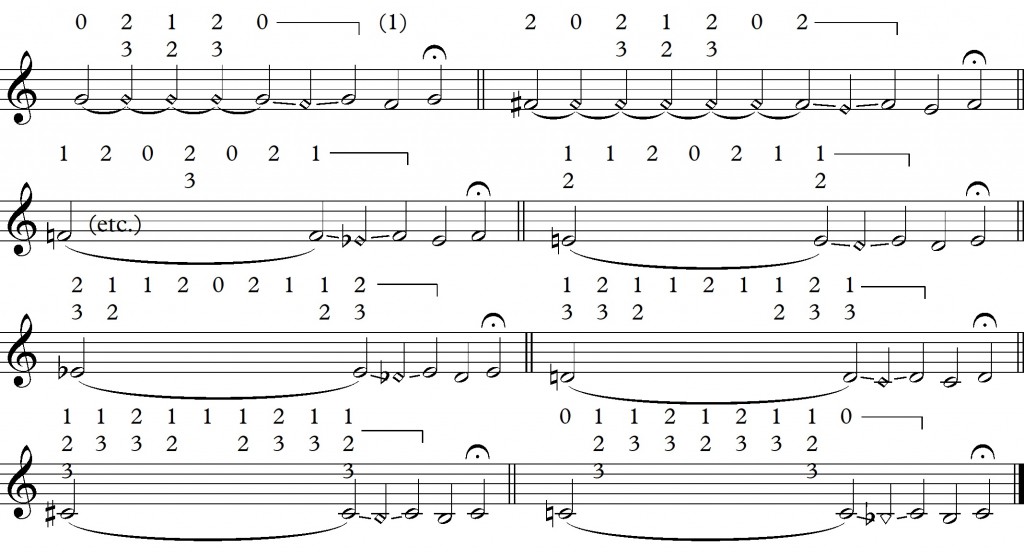If you’re a tru mpeter and you’ve heard me warming up… or I’ve heard you warming up… or if you’ve talked to me about practice routines for more than two minutes… you might know about my obsession with tone bending. This belief isn’t original, but it is important. My routine changes constantly, but (after breathing) it always begins with tone bending.
mpeter and you’ve heard me warming up… or I’ve heard you warming up… or if you’ve talked to me about practice routines for more than two minutes… you might know about my obsession with tone bending. This belief isn’t original, but it is important. My routine changes constantly, but (after breathing) it always begins with tone bending.
Satisfied customers
You can see other trumpeters talk about this, particularly if they’re affiliated with the pedagogy of James Stamp. For example, check out this Häkan Hardenberger masterclass transcription:
Those of you who know about Stamp, know the ”bend” notes? This is the kernel of the whole system… the balance between air and vibration. What I start with is – almost without wanting to play – just placing the trumpet on the lips to make what Stamp calls the “poo” attack – no tongue, just air – absolutely not strong – and then you see what happens… Then I try to listen to where my tone is that day…
Now comes the “bend” – which means that you bend the tone out of the centre and then return to the centre to get a cleaner centre… What one must not do is to push against the tone… let the tone “rest” and keep its freedom.
You can see references to similar ideas in the actual Stamp method, Warm-Ups and Studies, in Michael Sachs’s Daily Fundamentals (another Stamp student) and, for a different take, check out John Daniel’s Special Studies. James Thompson also includes a bending exercise in his Buzzing Book to help students find the pitch centre.
Return on investment
Disclaimer: how you practice is always supreme, not what you practice. However, an exercise gives you an opportunity to monitor or improve certain things, and some exercises make it easier to focus on certain aspects of our playing. Bending is extremely helpful for focusing on:
- Tone quality
- Finding the pitch centre
- Listening intently, both for intonation and for quality of sound
- Listening specifically, for resonance, core, purity of sound, etc.
- Engaging the corners of our embouchure in a non-taxing range
- Proper air support and playing without strain
Again, just because this exercise provides you with an opportunity to work on these things doesn’t mean it will magically do the work for you!
How-to
There are three basic approaches to bending (by the way, we’re talking about bending down): slowly bending out of the centre and back up to it; immediately bending to a set pitch; or maintaining the same pitch while fingering the notes above, like so:
 Personally, I mix it up, using all three approaches at various points, since each has its particular merits.
Personally, I mix it up, using all three approaches at various points, since each has its particular merits.
Practicing what I preach
My routine is always changing, but most often I’ll do the two exercises below. Usually I bend to a specific pitch, then go back and slur to the “real note” with the valve – this helps me check whether the bent pitch was in tune, and it reminds me to keep flowing. This is all within the range of low C to middle G, the most comfortable range of the instrument:

Now I’ll do a second set. Everything depends on how I’m sound on a given day. If things are rough I’ll take more time with the bends, staying calm and slowly improving my tone quality.
During the second set, I try to do a bit more. In the exercise below, I bend further and incorporate more than one type of bending. As the exercise progresses I increase the size of each bend and stretch the breath further.

This is something I worked up to over a period of years. At the Chosen Vale seminar, I once heard Gabriele Cassone play a complete, one-octave chromatic scale without valves! We all need to start somewhere, and if this is new to you, even an in-tune semitone might be a struggle. Keep practicing, and always use your ears!
